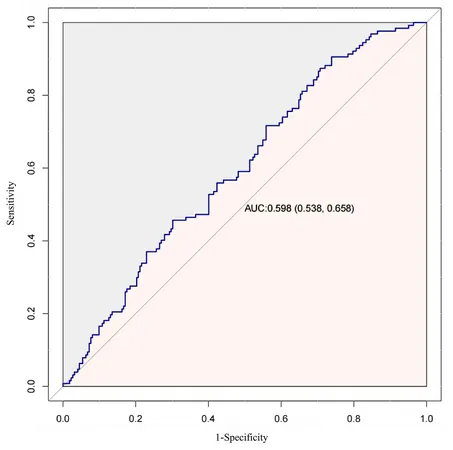
Unlocking the Secrets of Adolescent Depression: The Shocking Role of Electrolytes!
2025-05-07
Author: Sarah
Introduction: A Deep Dive into Adolescent Depression
A groundbreaking study seeks to shed light on the complex link between physiological factors and adolescent depression, particularly focusing on the differences between those experiencing psychotic symptoms and those who are not. By analyzing the role of electrolytes and complete blood counts (CBC), researchers aim to pave the way for better diagnosis and treatment options tailored to individual needs.
Research Methodology: Exploring the Patient Demographics
In an insightful investigation, data from hospitalized adolescents diagnosed with major depressive episodes—both with and without psychotic symptoms—were meticulously collected. This exploration, spanning from May to December 2023 at The First Hospital of Hebei Medical University, took into account critical demographic factors including gender, age, and lifestyle habits to better understand their influence on depression.
Key Findings: The Surprising Correlations
Among the standout discoveries of this research, calcium levels emerged as a significant player, showcasing a staggering odds ratio (OR) of 21.95 for psychotic symptoms. White blood cells (WBC) and neutrophils (NE) also had notable associations, indicating these indicators may serve as key markers for future interventions. However, the predictive model constructed from these findings received a less-than-stellar performance rating, boasting an area under the curve (AUC) of just 0.598.
Understanding Psychotic Depression: The Bigger Picture
Psychotic Depression (PD) is notorious for its severe symptoms, which can dramatically impact recovery rates and prognoses. Alarmingly, about 0.35-1% of people experience PD at some point in their lives. Previous research has suggested that physiological factors such as electrolyte levels may play a role in the severity of depressive symptoms, but comprehensive investigations in adolescents have been sorely lacking.
Electrolyte Imbalances: A Hidden Culprit?
The study proposed a compelling hypothesis: electrolyte and CBC abnormalities are prevalent in adolescents grappling with depression, particularly those exhibiting psychotic symptoms. The analysis revealed that elevated calcium levels, alongside inflammatory markers like WBCs and NE, were strongly associated with psychotic features in depressed adolescents.
The Immune Response: A Potential Key to Unlocking Treatment?
The findings indicate that an activated immune response may underpin the development of depressive symptoms, as evidenced by elevated levels of immune cells. This supports the growing body of evidence linking inflammation with psychological disorders. The suggestion that calcium and inflammatory markers could hold the key to understanding adolescent depression raises crucial questions about how we approach treatment.
Limitations: The Need for Broader Insights
While the study provides valuable insights, it is not without limitations. The findings are drawn from a study population limited to Chinese adolescents, and the cross-sectional design restricts the understanding of long-term dynamics in electrolyte levels and blood counts. A larger, more diverse sample along with a longitudinal approach may yield even deeper insights.
Looking Ahead: Future Directions for Research
As experts call for more integrated studies that consider genetic, environmental, and lifestyle factors, the potential for breakthroughs in the understanding and treatment of adolescent depression continues to grow. By focusing on the interplay between electrolytes, immune responses, and mental health, researchers hope to unlock new therapeutic avenues that could transform the lives of young people battling depression.



 Brasil (PT)
Brasil (PT)
 Canada (EN)
Canada (EN)
 Chile (ES)
Chile (ES)
 Česko (CS)
Česko (CS)
 대한민국 (KO)
대한민국 (KO)
 España (ES)
España (ES)
 France (FR)
France (FR)
 Hong Kong (EN)
Hong Kong (EN)
 Italia (IT)
Italia (IT)
 日本 (JA)
日本 (JA)
 Magyarország (HU)
Magyarország (HU)
 Norge (NO)
Norge (NO)
 Polska (PL)
Polska (PL)
 Schweiz (DE)
Schweiz (DE)
 Singapore (EN)
Singapore (EN)
 Sverige (SV)
Sverige (SV)
 Suomi (FI)
Suomi (FI)
 Türkiye (TR)
Türkiye (TR)
 الإمارات العربية المتحدة (AR)
الإمارات العربية المتحدة (AR)